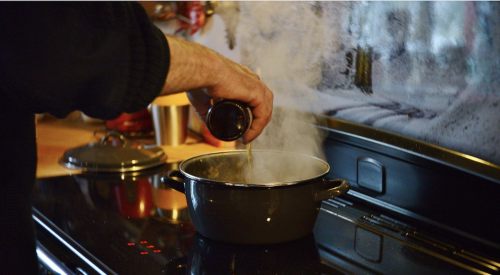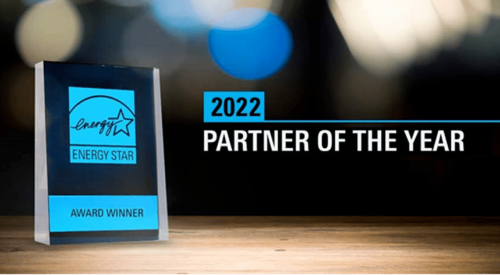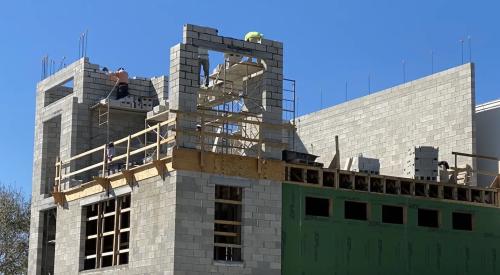| A perfect balance: New homes and ecology coexist beautifully at Terramor in Ladera Ranch, Calif. Homes built to green building standards open onto large grassy areas rather than streets, and each home’s garage includes a hookup for charging electric cars. | ||||||||||||||||||||||||||||||||||||||||||||||||||||||
|
|
|
|
|
Green building -- loosely defined as the practice of building with reduced environmental impact -- continues to grow in importance in the home building industry. Once the practice of small, boutique builders willing and nimble enough to take risks and embrace new ideas, green building appeals to an ever-widening circle of builders, including large local and regional builders and even big national builders.
As the circle of practitioners widens, so does the definition of green building. In general, green building incorporates:
- high energy efficiency in HVAC systems, lighting and appliances.
- a well-sealed, well-insulated building envelope.
- proper natural and mechanical ventilation to improve indoor air quality.
- water-conserving features indoors and out.
- recycled-content, rapidly renewable and/or durable products.
- careful product selection to eliminate or reduce the off-gassing of dangerous chemicals.
- proper orientation of a home on its site to take advantage of daylighting and passive solar heating and cooling.
- minimized land disturbance through site and land planning that preserves natural features and environments.
Green building also can include much, much more depending on the "shade" of green one builds. What keeps pushing green forward, especially with production builders, is that it's not an all-or-nothing proposition, and it's not just about straw-bale houses, wind turbines, recycled pop-bottle carpets and cork flooring. Builders can choose the green building elements that work for their products and their buyers in their market while still contributing to the overall goals of reducing negative environmental impacts and "greening" the new home construction industry.
Focus on Performance
More and more builders are focusing on building performance through an approach that recognizes the home as an integrated, interdependent system as opposed to merely the sum of its individual products and parts. A systems-based approach recognizes, for instance, that a tighter building envelope with minimized air leakage and improper mechanical ventilation prevents fresh air from entering and stale air, moisture and indoor air pollutants from exiting.
Systems thinking touches on many of the same components as green building, including energy efficiency and improved indoor air quality, but builders don't necessarily think of this approach as green. Results resonate more strongly than ecology.
Pulte Homes emphasizes building performance companywide, with its Southwest divisions leading the way. In addition to firms such as Building Science Corp. and IBACOS, Pulte works with Masco Contractor Services' Environments for Living program, a voluntary program that uses building science principles to set specifications in seven key areas: tight construction, improved thermal systems, fresh-air ventilation, properly sized HVAC equipment, combustion safety, interior moisture management and pressure balancing.
|
Building consultants customize the tiered Environments for Living program -- including plan review, product selection, checklists and execution -- for each Pulte division according to the climate and demands of its market as well as the division's level of commitment. Masco or Masco-certified raters then do performance testing, using blower-door tests and duct blasts, for example, on a percentage of the homes to make sure the division meets prescribed goals. The Masco program includes 40 other production builders.
The payoff for buyers: When the builder meets the specs, Masco guarantees the homeowners' energy usage and comfort, defined as maintaining no more than a 3-degree variation in temperature throughout the house. The builder's return on investment comes through increased customer satisfaction.
Paul Cardis, president of NRS Corp., which researches customer satisfaction in the home building industry, has found that customers value energy efficiency more than he expected. In evaluations for the 2003 NRS Award in Homeowner Satisfaction (September PB), builders with high overall customer satisfaction scores also received high marks from buyers in energy efficiency.
"Energy efficiency contributes to a perception of quality and value," Cardis says. Rather than caring only about a home's aesthetics, "buyers are much more savvy about performance and longevity."
Engle Homes Colorado's director of marketing, Lisa Lockwood, says the company is part of a movement in which builders better understand and comply with building science methods. The company aims to elevate not just green building, but also designing, building and educating buyers about the home as a system.
Engle builds to the standards of Colorado Built Green, one of the first green building programs in the country. Although buyers know the Built Green name, they do not necessarily know what Built Green and high performance mean for them. In collateral marketing materials, Engle hits key construction specifics, detailing its features checklist and challenging buyers to compare it with other builders', and briefly explains how certain construction techniques and material choices benefit buyers. For example, a home diagram with callouts tells buyers that low-E vinyl windows "block out unwanted light and solar heat gain, resulting in energy savings, heightened comfort and minimized fabric fading."
Selling the Benefits of Green
Engle Colorado's marketing model exemplifies the shift in green building marketing philosophy. Green builders started with a save-the-earth appeal, marketing to a small percentage of buyers who wanted to "do their part." Now, builders take more of a results-oriented approach. Recognizing and selling to buyers' environmental values remains worthwhile, but it becomes a value-added proposition rather than the primary marketing thrust.
Part of that shift can be attributed to the increased availability and use of measurement tools. For instance, companies building under the U.S. Department of Energy's Energy Star for Homes program can hand new homeowners a copy of their home's Home Energy Rating Systems score, verified by a third-party inspector to be at least 86, or 30% more efficient than Model Energy Code standards. Some of the 44 local and state green building programs operating or under development across the country also require third-party HERS ratings -- determined by blower-door and duct-blast tests -- for certification, but most require testing only a percentage of a builder's homes or don't require testing at all.
Several builders guarantee a maximum annual heating and cooling cost (or maximum usage in terms of British thermal units). Two production builders, Bigelow Homes in Aurora, Ill., and Ideal Homes of Norman, Okla., have been issuing such guarantees for years. Perry Bigelow says his entry-level buyers won't pay more for green building but definitely respond to guaranteed maximum energy costs for three years. This year, Bigelow guarantees a $400 annual maximum. He can make that promise by tightening the building envelope through R-38 attic insulation, insulated basements (per plan), home orientation that maximizes passive solar heating, and double-glazed, low-E windows. Bigelow recoups the extra cost of building a super-tight house by downsizing the HVAC system.
Ideal Homes also guarantees energy costs as part of its value package, but its homes cost 5% to 10% more than the competition's. Vernon McKown, president of sales, says buyers will pay for increased energy efficiency if salespeople are trained to sell it. He puts Ideal's salespeople through role-playing exercises for four weeks but says it still takes them about six months to feel totally comfortable explaining the benefits of energy efficiency. Once their training ends, however, they know how to use guaranteed energy costs as a differentiator.
"Production builders all get commoditized to a certain degree," McKown says, especially at the opening price points. "Buyers are comparing your $150,000 house to the $150,000 house built by the guy down the street." While other builders might use upgraded carpets or crown molding as a point of differentiation, "they can't just pull a guaranteed energy bill out of their pocket."
The guaranteed energy bill shows real return on investment, McKown says, and that "gives buyers a logical reason to make a very emotional decision."
Moving to the Next Level
Fifteen years ago, if builders wanted to give green building a shot or significantly improve energy efficiency, finding the proper resources might have been difficult. Stalwarts such as the Energy & Environmental Building Association, which has existed for 20 years, lacked the exposure to reach a broad audience, and green building programs backed by home builders associations and government-sponsored programs such as Energy Star and Building America didn't exist.
Now, 19 states have local or statewide green building programs, with more than 900 participating builders and 30,000-plus homes built under program specs (some programs do not track numbers of builders or homes). Some of these programs are beginning to recognize entire green developments as well as homes. The Florida Green Building Coalition granted its first green development certification in April to Verandah, developed in Fort Myers by The Bonita Bay Group with preserved wildlife habitats, restored historic flow ways, a 1.75-mile protective easement along the Orange River and nearly 65% open space.
Nationally, the NAHB and the U.S. Green Building Council are developing national green building standards. The USGBC's standard will be a tiered system that recognizes various levels of achievement.
Still, unlike Building America, most green building programs use only component checklists rather than systems-based performance testing. Duncan Prahl, innovative programs leader for IBACOS, a Building America team, sees that changing for several reasons, including mold and moisture problems in houses that looked green on paper but never underwent empirical testing. Such change, he says, holds the key to growing the movement through companywide buy-in from the industry's biggest players.
"Production builders in individual divisions really have a huge amount of autonomy," Prahl says. "As we get better measurement instruments and production builders see how high-performance home building affects business, division successes may drive corporate commitments."
The Noisette Project, an urban revitalization of a former Navy base in North Charleston, S.C., will teach many green lessons. The project involves not only 3,000 acres and 5,000-plus new housing units, along with parks, retail, industrial and commercial, but also the rehabilitation of about 6,000 existing housing units.
The community-driven project aims to maintain not only the sustainability of the land through restoration of neglected ecological areas, but also the social sustainability of the people who already live there and in surrounding communities.
The Noisette Co.'s sustainability overlay, an overarching set of standards much like a transportation overlay, includes:
- restoring native landscape.
- rebuilding infrastructure.
- its own building, energy and toxicity codes.
Project leader John Knott, builder of Dewees Island, a private, environmentally sensitive community in South Carolina, calls Noisette the first completely sustainable zone in the nation. More information can be found at www.noisettesc.com.











